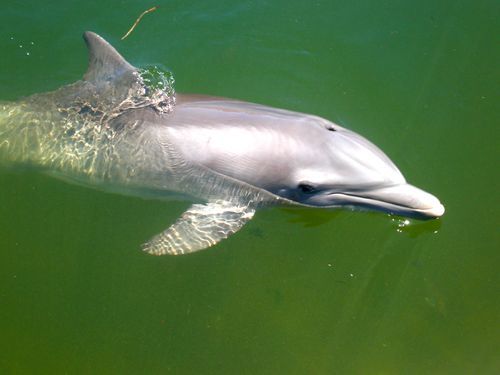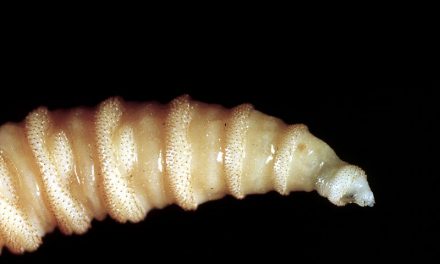A new study led by University of Miami researchers has found that the toxins produced by blue-green algae have been found in dead dolphins that also “showed signs of Alzheimer’s-like brain disease.“1 Published Wednesday in the peer-reviewed journal PLOS One, this study is the first to show detectable levels of the toxin (BMAA) “in dolphin brains that also displayed degenerative damage similar to Alzheimer’s, Lou Gehrig’s disease and Parkinson’s in humans.”1
More study will be needed to definitively prove that the toxins are contributing (or causing) the disease. However, these findings add to a growing body of research showing algae blooms are a human health threat. It also proves once again that everything is connected: the health of marine animals is directly affected by our water quality. (Which is beyond poor.)
RELATED STORY:
“The connection between the toxin and brain disease is still relatively new and not without controversy. Scientists first discovered the link after a botanist visiting Guam to research cancer took another look at a decades-old mystery surrounding a degenerative brain disease, Discover Magazine reported in 2011. The disease hit nearly every household in a small village, leading researchers to focus on the seed from cycads, a plant often confused with palms and a staple of villagers’ diet.
The seeds contain BMAA, but researchers concluded that villagers could never consume enough to make them sick. The botanist, Paul Cox, found the connection when he discovered that the villagers also ate fruit bats, which feasted on the seeds and had a much higher concentration of BMAA because it accumulated in their bodies over time, according to a 2012 Environmental Health Perspectives account.”1
When the study was repeated, BMAA was again found in the brains of those suffering from degenerative diseases. That’s bbecause according to David Davis the lead author and a University of Miami Miller School of Medicine neuropathologist, BMAA is “more of a long-term toxin” that “…integrates and causes proteins for misfold and that’s when you get chronic inflammation and that leads to degenerations.”1
“For this study, researchers looked at brains from 14 dead dolphins, including seven Florida bottlenose dolphins that beached themselves in 2005 along the Atlantic, the Indian River Lagoon, the Banana River and Gulf of Mexico where algae blooms frequently occur. They also looked at seven common dolphins that were found dead in Cape Cod Bay off Massachusetts in 2012.
All but one dolphin, which died from a boat strike, had BMAA in their brains as well as signs of degenerative disease. Notably, the Florida dolphins had three times the amount of toxins. That’s likely because they swim closer to shore and into estuaries where blooms occur, Davis said, and eat smaller marine life, like shrimp, crabs and prey fish, that consume the algae.
Looking at dolphins in the wild also gives scientists a more realistic model of how the toxin accumulates and may cause damage. Davis said, “This isn’t animals being fed a certain dose over a certain amount of time. It’s naturalistic exposure. If you have these … dolphins feeding in the same marine food web as humans, potentially eating the same things as humans, that’s why we say it serves as a sentinel.”1
“…researchers have begun a second study using dolphins that died during last year’s prolonged algae blooms. Nearly 150 were found in Gulf waters, which prompted the National Oceanic and Atmospheric Administration to launch an investigation. So far nothing suggests the toxins caused the beachings, which can be a complex event. But Davis said the larger sample will allow researchers to look at more brains. They also plan to examine more parts of the dolphins’ brains.”1
Since 2012, more studies have found higher incidences of Lou Gehrig’s disease in people who live near lakes with frequent blooms. Researchers hope the second study will be completed in a year.
SOURCE:












